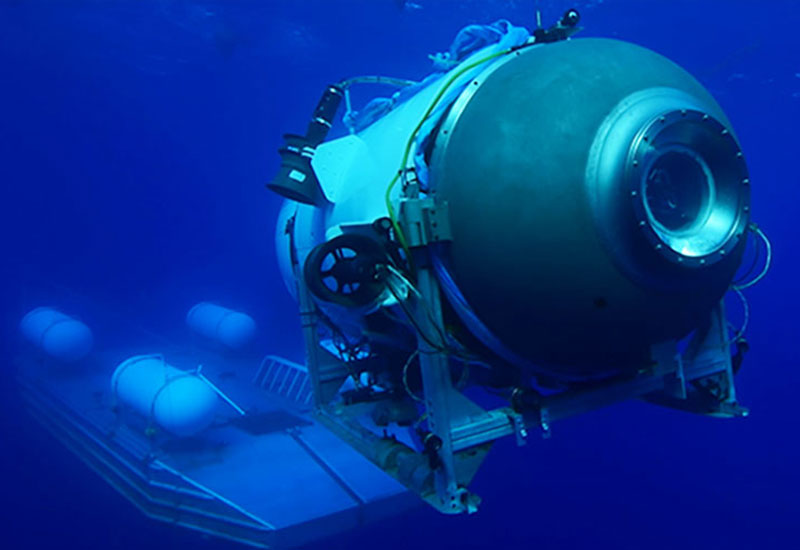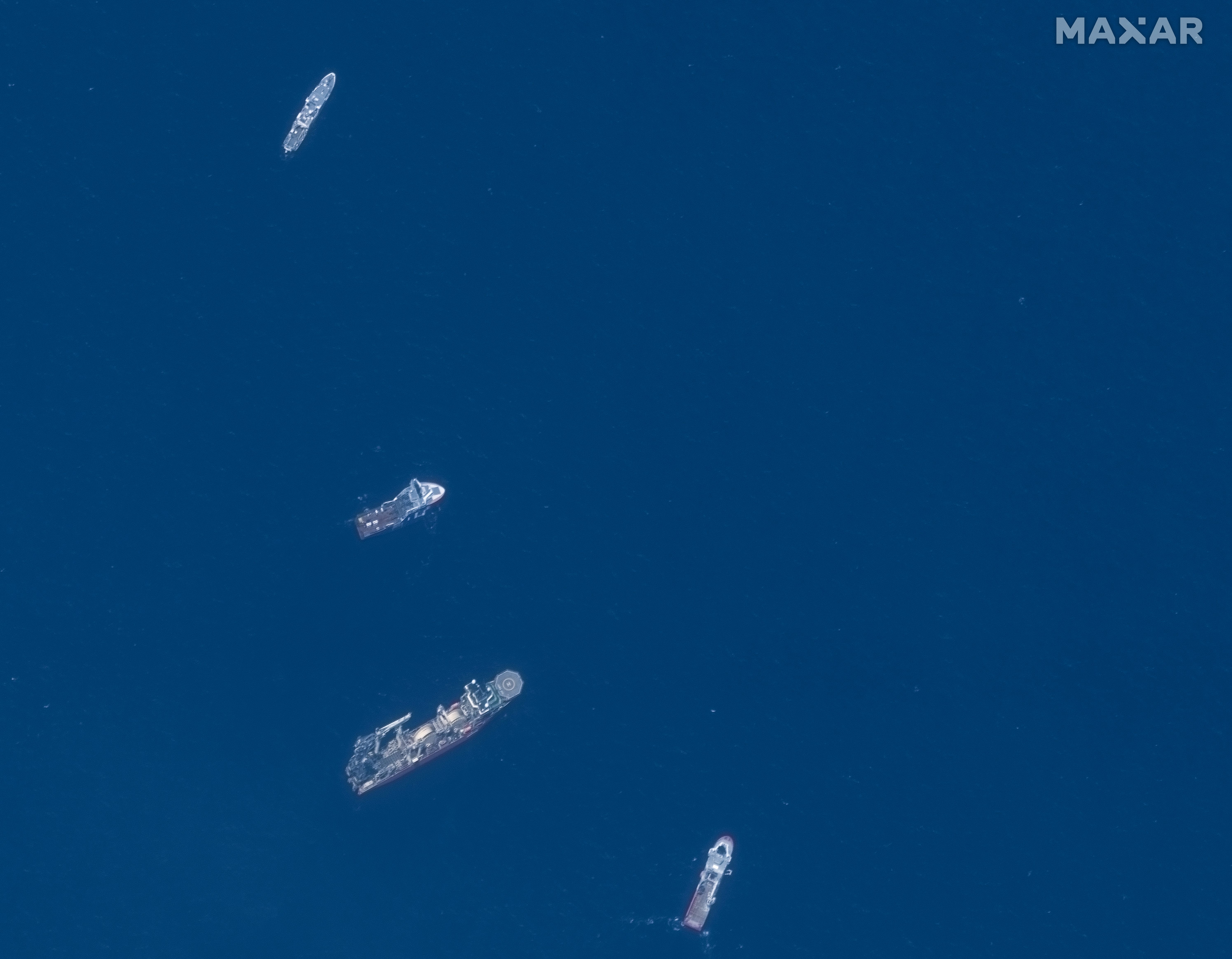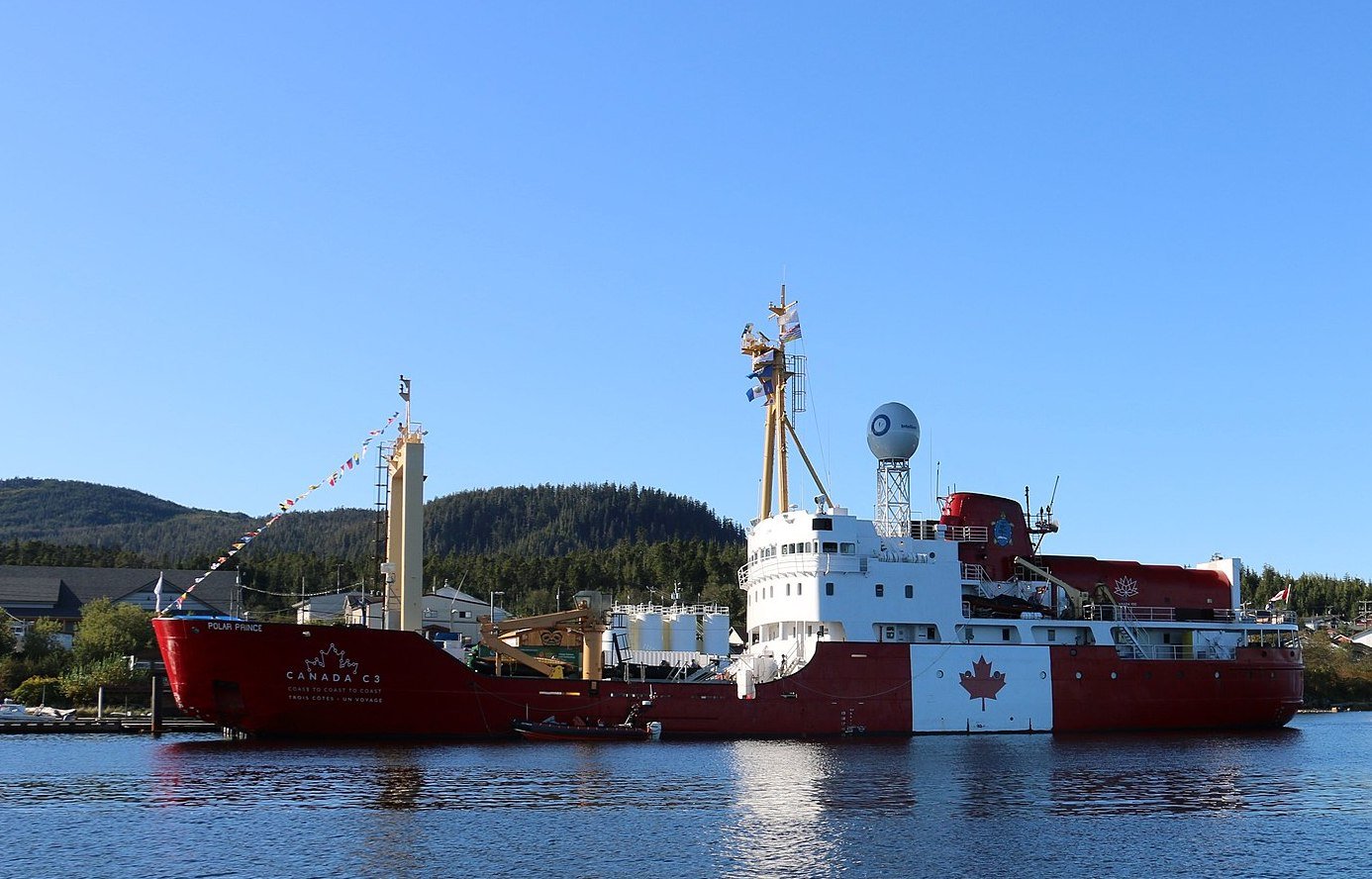
This post will be updated as new information is available.
The remains of the Titan submersible were found 1,600 feet away from the wreck of the RMS Titanic in what the Coast Guard is calling a catastrophic implosion.
Speaking at a Thursday afternoon press conference, Rear Adm. John Mauger, commander of the First Coast Guard District, said that parts of the submersible, including the tail cone, were found by a remotely operated vehicle. The debris indicates that the submersible likely experienced a failure, which ultimately resulted in the deaths of the five passengers aboard, including OceanGate CEO Stockton Rush.
“The debris is consistent with the catastrophic loss of the pressure chamber,” he said.
“Upon this determination, we immediately notified the families on behalf of the United States Coast Guard and the entire unified command… I can only imagine what this has been like for them. And I hope that this discovery provides some solace during this difficult time.”

The Coast Guard will continue to map the debris field, Paul Hankins, director for salvage operations with the U.S. Navy said during the Thursday press conference.
The Coast Guard-led team found five major pieces of debris that led it to conclude it was the Titan, Hankins said. First, the ROV found the nose cone, which would have been outside the pressure hull.
The team then determined there was a wide debris field, in which it found the front end bell of the pressure hull, the first indication of a catastrophic failure. The ROV found a secondary, smaller debris field, which contained the other end of the pressure hull.
The ROV that discovered the debris was operating from Horizon Arctic, a Canadian anchor-handling vessel. The Coast Guard tweeted that the ship dropped its ROV, which had made it to the sea floor, around 7:45 a.m. Thursday morning.
L’Atalante, a French research vessel that arrived in St. Johns Wednesday, also dropped its ROV unit Thursday morning. The Victor 6000 can reportedly descend to 6,000 meters and has arms that are able to cut cables, according to the Guardian.
To identify the debris as part of the Titan, the team would have needed to find a piece of debris large enough to be identifiable and then bring it up to the surface for analysis, said Sal Mercogliano, an associate professor at Campbell University.

Naval experts analyzed the debris, according to the Coast Guard. Finding debris from the pressure hull likely allowed the Coast Guard to determine there was a catastrophic failure, Mercogliano said.
The debris field is consistent with an implosion in the water column, said Carl Hartsfield, director and senior program manager for the Oceanographic Systems Laboratory at the Woods Hole Oceanographic Institute, during the press conference.
It is too early to determine a timeline for when the implosion occurred, Mauger said. However, it was not detected by sonar buoys launched by the Coast Guard, which implies it happened prior to their deployment.
Going forward, the Coast Guard will continue to map out the debris field, Mauger said, with remote operations continuing on the sea floor. It will also start to demobilize a number of ships and assets that came out to help with rescue efforts. As of Thursday, there were nine ships in the search area, as well as technicians and medical personnel.
“This was an incredibly complex operation, and we were able to mobilize an immense amount of gear to the site in just a really remarkable amount of time,” Mauger said.
Following the announcement from the Coast Guard, a senior Navy official confirmed to USNI News that the service’s underwater detection systems recorded an implosion that was likely Titan.
“The U.S. Navy conducted an analysis of acoustic data and detected an anomaly consistent with an implosion or explosion in the general vicinity of where the Titan submersible was operating when communications were lost. While not definitive, this information was immediately shared with the incident commander to assist with the ongoing search and rescue mission,” the senior official told USNI News on Thursday.
“This information was considered with the compilation of additional acoustic data provided by other partners and the decision was made to continue our mission as a search and rescue and make every effort to save the lives aboard.”
The official did not name the system, however, the Navy for decades has operated an underwater listening net to detect submarines close to the U.S. The Integrated Undersea Surveillance System includes the well-known Sound Surveillance System (SOSUS), a series of hydrophones on the sea floor.
“[The] Integrated Undersea Surveillance System mission is multi-faceted, encompassing not only the operations of detection, localization and tracking of submarines and the collection of acoustic and hydrographic information, but also the maintenance of processing and communications equipment necessary to carry out the operational mission,” reads a 2017 Navy description of the system.
The Navy’s detection of the implosion was first reported by The Wall Street Journal.
What’s Next

As part of the mapping of the debris field, the Coast Guard will look for remains of the five crew members who died when Titan imploded. However, Mauger was not sure of the likelihood that the passengers could be recovered.
“And so this is an incredibly unforgiving environment down there on the seafloor,” Mauger said. “Again, the debris is consistent with a catastrophic implosion of the vessel. And so we’ll continue to work and continue to search the area down there, but I don’t have an answer for prospects at this time.”
Retired Navy Reserve Capt. Jack Newman, a former submariner, said it was unlikely that remains would be found due to the nature of implosion.
Implosions are fast, Newman told USNI News. It happens so quickly that an object could be there one second and then gone before the brain could register what happened. For the passengers aboard the end would almost instant.
“The ocean collapses the whole thing suddenly,” Newman said..
When the implosion happened is still an open question, as is where. One thing that studying the debris field can tell the team is if the implosion happened as the submersible was descending or if it happened at the bottom of the ocean, Mercogliano told USNI News. A close debris field would indicate it happened at the bottom.
There is still a possibility for recovering more remains of Titan, including from the submersible’s shell, Mercogliano said. The question is how much of the pressure vessel remains outside of the titanium ends already recovered.
Newman raised concerns about Titan’s structural integrity. When it comes to the materials and the design, there are more questions than answers, including whether the submersible company knew the limit for how many times the submersible could go to max depth without risking metal fatigue. For U.S. submarines, the Navy tests each so that they know how many max depth cycles a submarine can go in its lifespan. Each time a submarine or submersible goes down at great depths, it causes stress to the structure.
The former submariner also questioned how well carbon fiber, the material that made up the main part of the body, could withstand water pressure and temperature at the depth it descended. Different materials will react in different ways, Newman said.
OceanGate, Inc., the company that designed and launched Titan, was involved in a 2018 lawsuit with a former employee that included allegations about safety concerns for the submersible, USNI News previously reported.
According to the lawsuit, a former employee raised concerns that the hull was not tested properly because the company did not scan the hull for potential issues and instead relied on acoustic measurement.
The Titan failure could lead to some regulatory actions, Mercogliano said. There are already ones for submersibles in U.S. water that are launched off of U.S. ships. However, there could be discussions beginning in Canada about new requirements.
The International Maritime Organization might also start adding regulations, he said.
Part of the issue with Titan is that there was no classification agency, which would lay out safety and maintenance requirements. While OceanGate might have had its own policies for safety and maintenance, a classification agency would provide an outside set of eyes. Mercogliano said.





